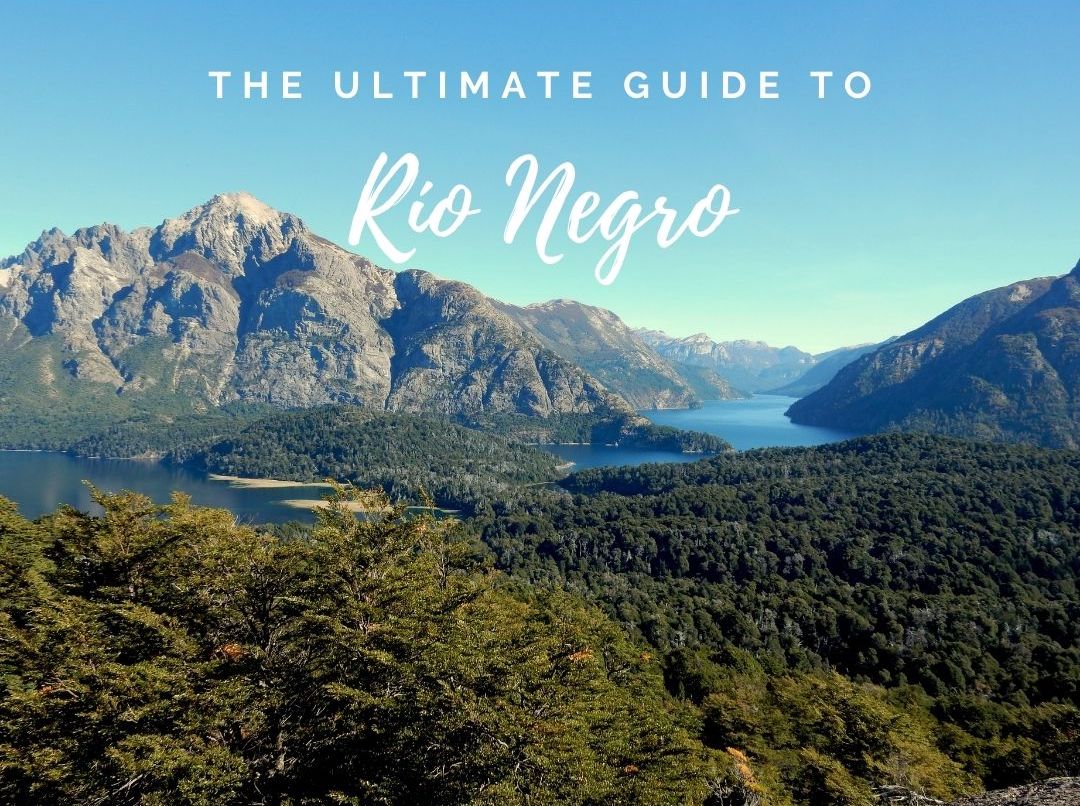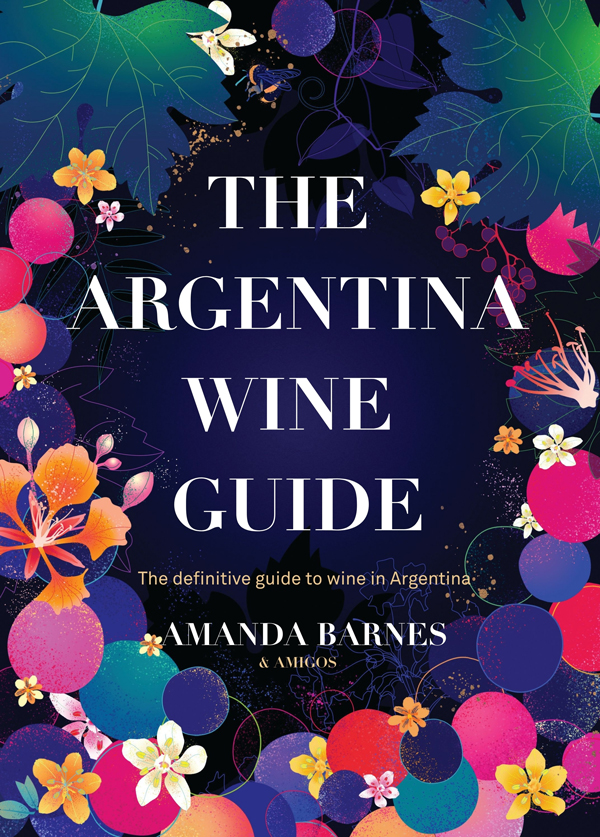Guide to Río Negro in Patagonia
Notable producers in Río Negro
Quick guide to Río Negro
Best wines to try from Río Negro
Map of Río Negro, Patagonia
Guide to Río Negro wine region
Río Negro, the province named after its glassy River Negro, is home to a historic wine region of Argentina that is gradually coming back into the limelight. Like most of Argentina’s wine regions, Río Negro also sits in the rain shadow cast by the Andes mountains, which lie far beyond the horizon some 350 km away. The breezy, dry and temperate climate, along with irrigation made possible by the river, have made this an ideal environment for growing grapes.
Grape varieties and wines in Río Negro
There is a lot to be excited about in Río Negro, and the region produces some of my favourite Argentine wines, which are distinctive because of their balance and elegance. What’s more, many of the remaining vineyards have old vines. The low yields of these old vines, in combination with the temperate climate, great luminosity and long maturation period at this southerly latitude produce wines with great natural balance between refreshing acidity, moderate alcohol and multiple layers of aromas and flavours.
It is the natural balance of these old vines that is enticing some wine producers to refocus their energies and attention on this ebbing wine region. Particularly exciting here is the old-vine Malbec, as well as old-vine Cabernet Sauvignon and Merlot. But Río Negro also makes stellar cool-climate varieties, including nuanced Pinot Noir and Riesling, as well as excellent old-vine Semillon and Trousseau. New vines of Chardonnay are also very exciting. The story of Río Negro is by no means coming to an end… this is a region worth watching.
Sub-regions of Río Negro
GENERAL ROCA (Upper Valley)
Hectares planted: 1,108
Altitude: 180 to 256 m.a.s.l
The main wine region of Río Negro with typically clay and sandy loam soils with some river gravels. Malbec, Merlot, Pinot Noir and Torrontés are the most-planted varieties, but I’m particularly excited by Semillon, Pinot Noir, Trousseau and Bordeaux blends from this region, especially from the old-vine sub-region of Mainque.
AVELLANEDA (Middle Valley)
Hectares planted: 192
Altitude: 120 to 160 m.a.s.l
Just to the east of General Roca and the second-most-planted region. The vineyards are typically very old and also mainly located alongside the river and have similar clay and sandy-loam soils. Malbec is the main variety, followed by Merlot.
ADOLFO ALSINA (Lower Valley)
Hectares planted: 97
Altitude: 4 to 100 m.a.s.l
Known as the Lower Valley, this is where the river mouth spills out into the sea and the vineyards are barely above sea level with a strong maritime influence. Sand and clay-silt soils are typical and strong breezes reduce the impact of coastal humidity. Low rainfall (400 mm a year) means that irrigation is essential. Malbec, Cabernet Sauvignon and Merlot are most common here; however I’m more excited by the smaller plantations of Sauvignon Blanc.
Notable producers in Río Negro
BODEGA CHACRA
Boutique, biodynamic and bloody delicious old-vine Pinot Noir by Tuscany’s Sassicaia heir, Piero Incisa della Rocchetta. His new Chardonnay project in Mainque is equally as exciting.
BODEGA DEL RÍO ELORZA
Winery in Río Negro owned by a family who took over, grafted and replanted a century-old vineyard. Now making fresh, vibrant wines (mainly red).
BODEGA MIRAS
Marcelo is one of the longest-serving winemakers in Neuquén and Río Negro and this is his boutique family winery. Very good Trousseau, Semillon and Pinot Noir.
HUMBERTO CANALE
This family winery is the grande dame of Río Negro, established in 1909 and still one of the most prolific (and most visited). The Old Vineyard line from their oldest blocks of vines is my favourite.
BODEGA NOEMIA
Hans Vanding Diers’ winery focused on old-vine Malbec and Bordeaux varieties in Mainque, Río Negro. Classy red wines of finesse and character.
PATRITTI
Established in Neuquén in 2003, with 110 hectares planted with different varieties, mainly used for the monovarietal Primogénito label. My pick is their Pinot Noir.
Quick Guide to Río Negro
Hectares planted
1,623 hectares
Average vine age
20 to 80 years old
Soils in Río Negro
Typically mixed clay and sandy loam with gravel (5% – 30%) at the surface
Most-planted grape varieties
Malbec, Merlot, Torrontés, Pinot Noir, Cabernet Sauvignon
Winemaker’s perspective on Río Negro: Marcelo Miras

We have a very similar climate in both Neuquén and Río Negro; a moderate continental desert climate with lots of sun exposure. The soils are very heterogeneous in both regions; the main difference is between the vineyards on the high terraces, which have sandy-stony soils, and those on the lower terraces, with lime and sandy-loam.”
Terroir Selection: Best wines to try from Río Negro
BODEGA CHACRA, 32 Pinot Noir
Río Negro. $$$$. Drinking window <20 years
Chacra’s old-vine Pinot Noir has long been one of the best in South America, and this is the grand cru of their impressive portfolio: a lo-fi Pinot Noir made with grapes from vines planted in 1932.
BODEGA DEL RIO ELORZA, Verum María Victoria
Río Negro. $$. Drinking window <10 years
This Malbec shows all the style and elegance that can be so typical of Río Negro Malbec: polished and silky with red fruit, graphite and floral notes.
FABRE MONTMAYOU, Gran Reserva Merlot
Río Negro. $$. Drinking window <12 years
Mendoza is a little too hot and dry for really good Merlot, which is perhaps why Hervé Joyaux Fabre makes this classy Merlot down south. Fine-grained tannins, forest fruits, exotic spices and cacao.
NOEMIA, J Alberto Malbec
Río Negro. $$$. Drinking window <12 years
Winemaker Hans Vinding Diers makes his stellar Noemia label from Malbec vines planted in 1955, but his second label, J Alberto, is one of my favourites. Violets, red berries, spice and cedar aromas.
HUMBERTO CANALE, Old Vineyard Riesling
Río Negro. $. Drinking window <10 years
Humberto Canale has excellent old-vine Semillon and Pinot Noir, but its Riesling is one of Argentina’s best. 83-year-old vines produce a wine of intensity and length, with white peach and citrus aromas. A steal at US$20.
BODEGA CHACRA, Chardonnay
Río Negro. $$$. Drinking window <15 years
This very serious Chardonnay, made with Burgundian great Jean-Marc Roulot, offers delicate top notes of blossom, white pears and citrus fruit. Chiselled with nuance and depth.
MARCELO MIRAS, Joven Trousseau
Río Negro. $. Drinking window <5 years
There are pockets of old vine-Trousseau in Río Negro that could well be some of the oldest in the world. Marcelo Miras’ interpretation of this ancient variety is a fresh, grippy wine with sour cherry, mint and earthy aromas.
MANOS NEGRAS, Artesano Pinot Noir
Río Negro. $$. Drinking window <10 years
This savoury, slightly bloody, Pinot Noir is another great example of why Pinot is a star of the south. Winemaker Colo Sejanovich also makes a delicious Red Soil Pinot from a different terroir in the region, which is the fruitier counterpart.
BODEGA DEL RÍO ELORZA, Verum Cabernet Franc Reserva
Río Negro. $$. Drinking window <10 years
There isn’t much Cabernet Franc in Río Negro but this wine might encourage producers to plant a little more: juicy red fruit expression with delicate and refreshing spice and pepper on the finish.
Want to know more about Patagonia
and other wine regions in Argentina?
Get your copy of the ARGENTINA WINE GUIDE E-BOOK!
Map of Río Negro wine region
You can download all the wine region maps for South America for free on this LINK. Please feel free to share and use the wine region maps while crediting @SouthAmericaWineGuide.


